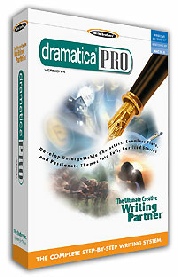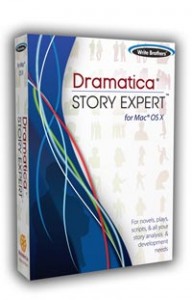The point at which the Objective Story and the Main Character hinge is appropriately called the Crucial Element. In fact, the Crucial Element is one of the sixty-four Objective Character Elements we have already explored (in the Dramatica Theory Book). When we look at the Objective Character Elements as the soldiers on the field (from our earlier example), there is one special Element from which the audience experiences an internal perspective on the story. This is the Main Character position in the Objective Story, and the Element at that point is the Crucial Element. As a result, whichever Objective Character represents the Crucial Element should be placed in the same player as the Main Character. In that way, what happens during the Main Character’s growth will have an impact on his Objective function. Similarly, pressures on his Objective function caused by the story’s situations will influence his decision to change or remain steadfast.
We can see that a Protagonist will only be a Main Character if the Crucial Element is one of the Elements that make up a Protagonist. In other words, a Protagonist has eight different Elements, two from each dimension of character. If one of them is the Crucial Element, then the player containing the Protagonist must also contain the Main Character. This means that there are really eight different kinds of heroes that can be created. An action hero might have a Crucial Element of Pursue, while a thinking hero might have a Crucial Element of Consider. Clearly, the opportunities to create meaningful Main Characters who are NOT Protagonists are also extensive.
The Obstacle Character has a special place in the Objective Character Elements as well. We have already discussed Dynamic Pairs. As it turns out, the point at which an Obstacle Character will have the greatest dramatic leverage to try and change the Main Character is the other Element in the Dynamic Pair with the Crucial Element. In simpler terms, the Main and Obstacle Characters are opposites on this crucial issue. Often one will contain the story’s problem, the other the story’s solution.
In the Objective Character Element set, if the Main Character (and Crucial Element) stands on Pursue, the Obstacle Character will occupy Avoid. If the Main Character is Logic, the Obstacle Character will be Feeling. In this manner, the essential differences between two opposite points of view will be explored both in an objective sense, looking from the outside in, and also in a subjective sense, from the inside looking out. All four throughlines come into play (Objective Story, Main Character, Obstacle Character, and Subjective Story), and by the end of the story, the audience will feel that the central issue of concern to the Story Mind has been fully examined from all pertinent angles.
To summarize, a complete story requires that both the Objective and Subjective views are provided to an audience, and that they are hinged together around the same central issue. This is accomplished by assigning the Main and Obstacle Characters to the Objective Characters who contain either the story’s problem or solution Elements. The Element held by the Main Character becomes the Crucial Element, as both the Objective and Subjective Stories revolve around it.
The Crucial Element: Where Subjective meets Objective The Crucial Element will be an item which is at the heart of a story from both the Objective and Subjective points of view. How this happens depends greatly on the Main Character. The Crucial Element is the connection between the Main Character and the Objective story and makes the Main Character special enough to be “Main.” This issue at the heart of the Main Character is thematically the same issue which is at the heart of the Objective Story.
For Example: To Kill A Mockingbird Crucial Element is INEQUITY Inequity is the problem which is causing all of the conflict around the town of Maycomb. The trial of Tom Robinson brings all of the towns’ people into squabbles about inequity in the treatment of different races, inequity among the social classes of people, their levels of income, and their educations.
Scout, as the Main Character, is driven by her personal problem of inequity. This is symbolized most clearly in her fear of Boo Radley. Kept at the margins of the Objective Story dealings with the problem of inequity, Scout however comes to see her prejudice against Boo Radley as being every bit as wrong.
Subscribe to:
Post Comments (Atom)







No comments:
Post a Comment